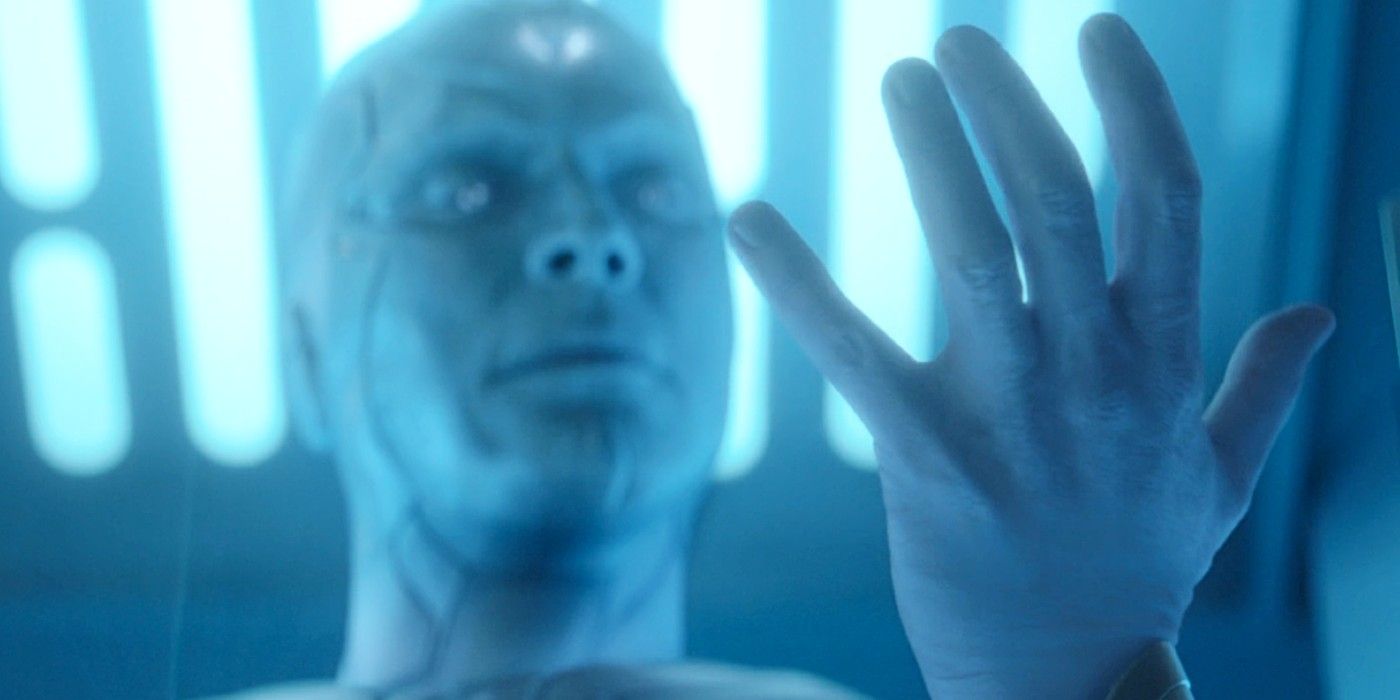
Warning: This post contains spoilers for WandaVision episode 8.
WandaVision episode 8 introduces S.W.O.R.D.’s true sentient weapon, the White Vision who is clearly set up for an intriguing, no doubt devastating showdown with the “real” Vision (Wanda’s version) and Scarlet Witch in the finale. The character’s shocking introduction was the clever pay-off to Acting Director Hayward’s almost buried tease in episode 7 of Project Cataract being ready as Monica Rambeau prepared her own attempt to infiltrate Wanda’s Hex. While the reveal of Agnes as Agatha Harkness stole most of the attention, Hayward’s seeding pushed another chess piece into position for this episode’s money shot.
The white Vision is the latest in a long line of superheroes being forced to fight versions of themselves: even beyond the limits of the MCU, Wolverine, Superman and The Arrowverse’s Flash have all battled dark inversions of themselves. It’s an easy, spectacular go-to for a story universe that so often includes journeys of self-discovery. For Vision – and indeed for Wanda – this version of Vision is a reminder that if not for their remaining humanity, amplified in no small part by their Avengers family, either of them could have been no more than weapons for someone else’s use. Indeed, that was the intention for both when Wanda was created by HYDRA’s experiments in Sokovia and Vision was created by Ultron as his final, probably unstoppable form. White vision brings all of that full circle.
While the emergence of the white alternative is a harrowing reminder of every nightmare Vision and Wanda had – as well as a specific violation of both Vision’s living will and the Sokovia Accords – it’s also one of the MCU’s coolest moments. That it comes in a show as bold and as creative as WandaVision – which was a mere sitcom pastiche with dark edges only a few episodes ago – is almost breathtaking. Here’s who White Vision is, how he’s been set up by S.W.O.R.D.’s secret plans, and what the character’s origins in the comics were.
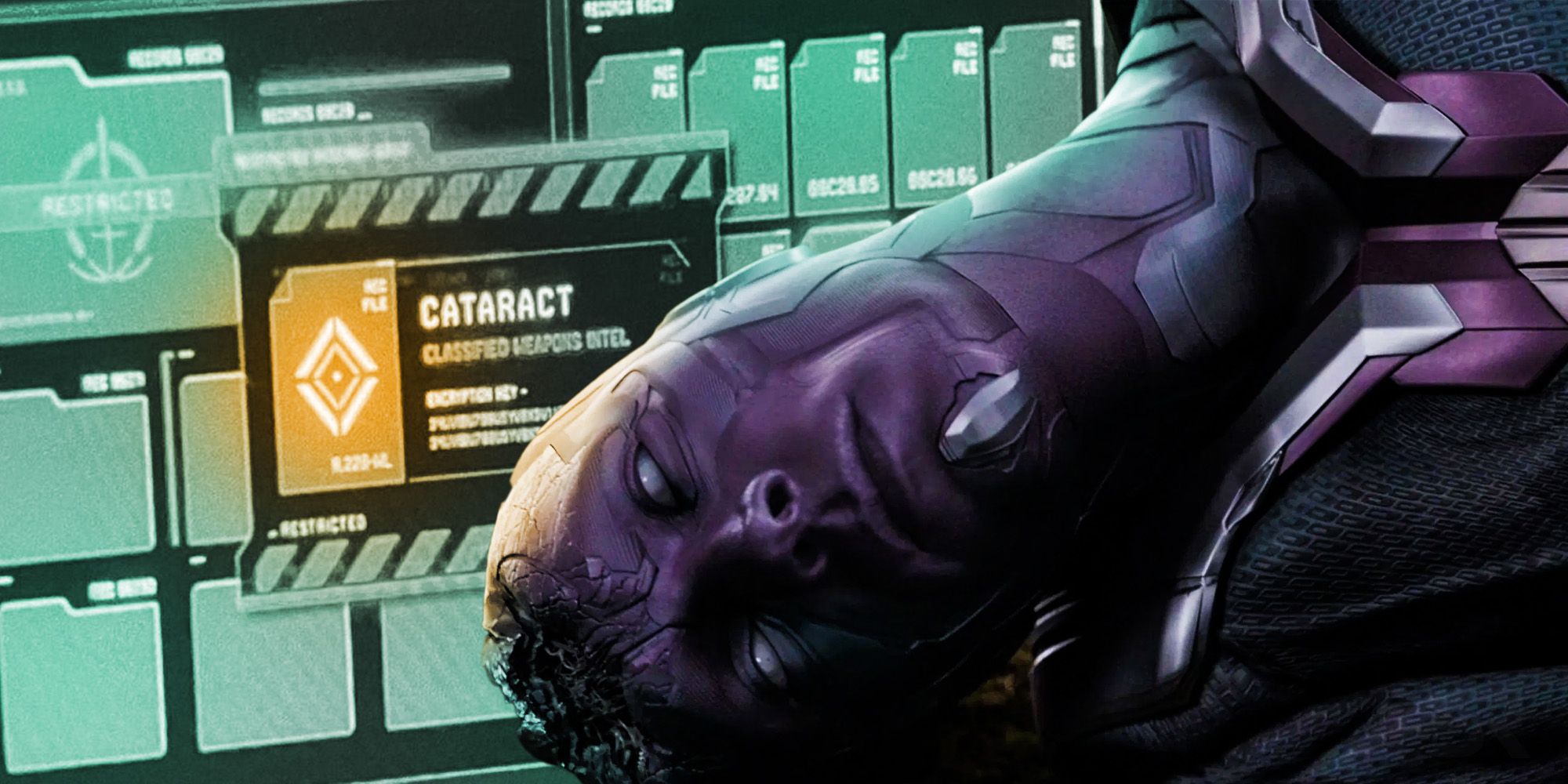
In retrospect, S.W.O.R.D. calling their secret Project Cataract should have been a big give-away: the word not only implies “imperfect vision” but also suggests the removal of a white gloss to eyes. That eerie effect was exactly what came over the synthezoid when Thanos killed him and undoing it is what revives him, in a parallel to a real cataract operation. Hayward is a clever, devious man. That much is clear from the fact that he falsely implicated Wanda in Vision’s theft (a ruse so clever he included a tracker on Vision that is not only illogically but possibly also impossible) in order to vilify her Wanda and justify his own project. Because, fundamentally, Cataract needs a reason to exist and perversely, Hayward has weaponized Wanda’s grief which his reveal of Vision’s corpse pushed over the edge.
In the gap between Endgame and WandaVision, S.W.O.R.D. disassembled and then rebuilt Vision, using Wanda’s power as the final piece in their grim jigsaw and bringing Vision back to life in a perverse mirror of how Wanda tried to kill him initially. There are still questions as to how he was rebuilt, given that in the comics Vision had to be reconstructed by Hank Pym, but the pay-off that Wanda’s power signature was the “lightning bolt” moment is both cruel and brilliant touch.
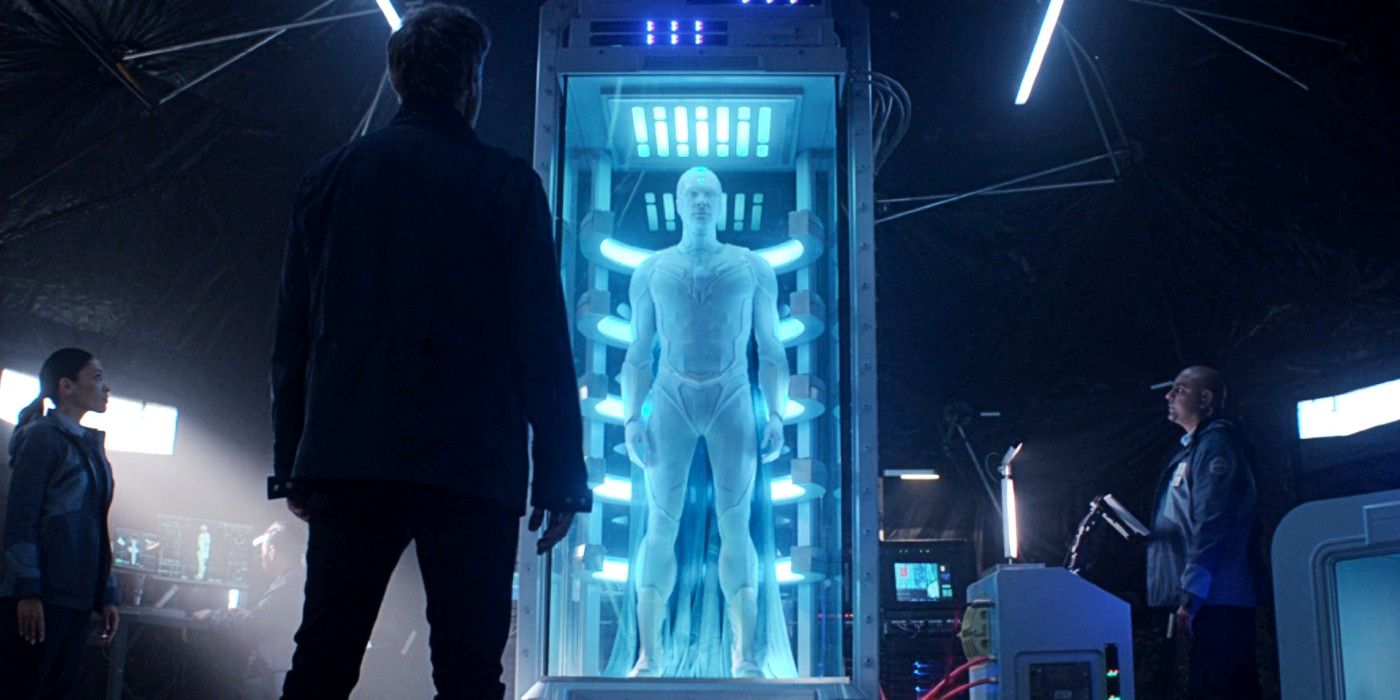
The version of Vision created by Project Cataract is an imperfect one, at least in the eyes of Wanda (and MCU fans of the character). It is, effectively, a blank slate, tied inherently to the Vision Quest comics arc created by John Byrne in the late ’80s. Just as Vision was reborn without emotion and any sense of his “soul”, S.W.O.R.D.’s version is clearly rebuilt without any of the inconvenient quirks of the real Vision like morality, humanity and a will for self-discovery. He is a mere machine, programmed by his masters to enact missions without anything that made Vision more human than robot. As his death proves in Infinity War, Vision’s color is linked directly to his vitality: when he dies, he loses his pigment, almost as if he’s drained of his blood. The chilling implication there is that the new S.W.O.R.D. Vision is a lifeless abomination.
The biggest question that remains for this Vision is how his existence is even possible: obviously, it was established that while Vision was reliant on the Mind Stone, his life wasn’t tied entirely to it. Shuri would have been able to separate the Infinity Stone from him without killing him, presumably at the cost of some of his powers. For S.W.O.R.D. to fully replicate Vision from his original parts, they would either need a new technology for knitting together disassembled synthezoids specifically or they would presumably need Dr Helen Cho’s Regeneration Cradle from Avengers: Age Of Ultron and a supply of Vibranium to patch him up. In short, Vision’s creation was so specific that it’s hard to imagine they were able to redo it perfectly. The white, then, is also a nod to that: an incomplete process that results in a different version of Vision that has lost key parts of himself.
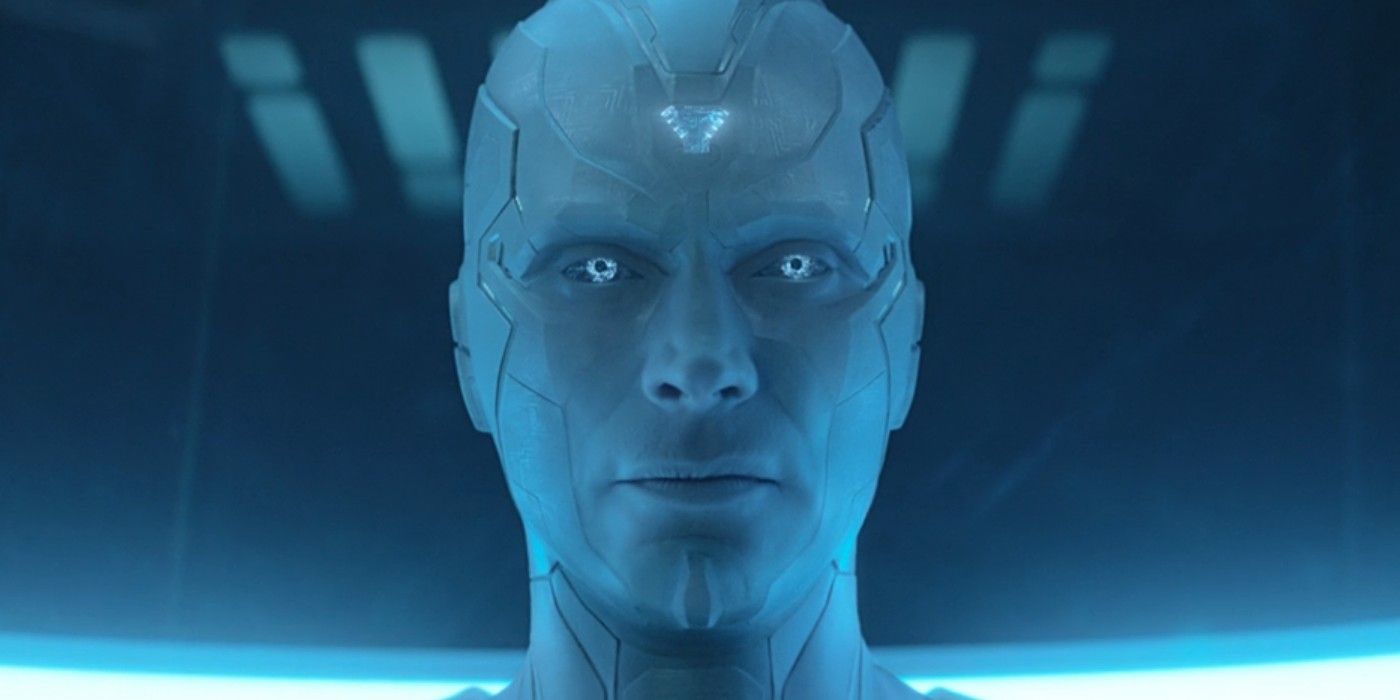
Vision’s fight with himself will not be the first time an MCU hero has faced off against an alternate version of themself: Hulk and Iron Man fought Mr Hyde-like inversions of themselves in Tim Roth’s The Abomination and Iron Monger but even more pointedly Captain America fought himself in Endgame and so too did Nebula. The MCU has a long fascination with the idea of facing heroes off against dark mirror versions of themself. Vision’s is slightly more poignant however because of the synthezoid’s quest to be more human. His living will was mentioned earlier in WandaVision as an expression of his fear that someone would do to his corpse exactly as S.W.O.R.D. has in Project Cataract, using his parts for nefarious reasons and specifically developing a weapon from him.
The project was also set-up in further back in the MCU Avengers: Infinity War by both Shuri and Bruce Banner, who assured Vision when the question of Shuri removing the Mind Stone came up, that “Your mind is made of a complex construct of overlays. Jarvis, Ultron, Tony, me, the stone. All of them mixed together.” Banner’s attempt to ease Vision’s concerns became the opportunity for someone like Hayward and his S.W.O.R.D. project to follow the logic and bring Vision back. And even before Shuri’s near-removal of the Mind Stone, this story found its roots in Nick Fury and S.H.I.E.L.D.’s reactions to Thor and the Destroyer’s invasion of Earth and their access to the Tesseract. Not only did a scared World Council authorize studying of the artifact, but it also sanctioned Fury to develop weapons specifically to deal with the threat of aliens and superheroes from other realms. It may make for uncomfortable reading, but Hayward’s logic in rebuilding Vision is exactly the same as Fury’s and is arguably even more justified by his experience during the “blip”.
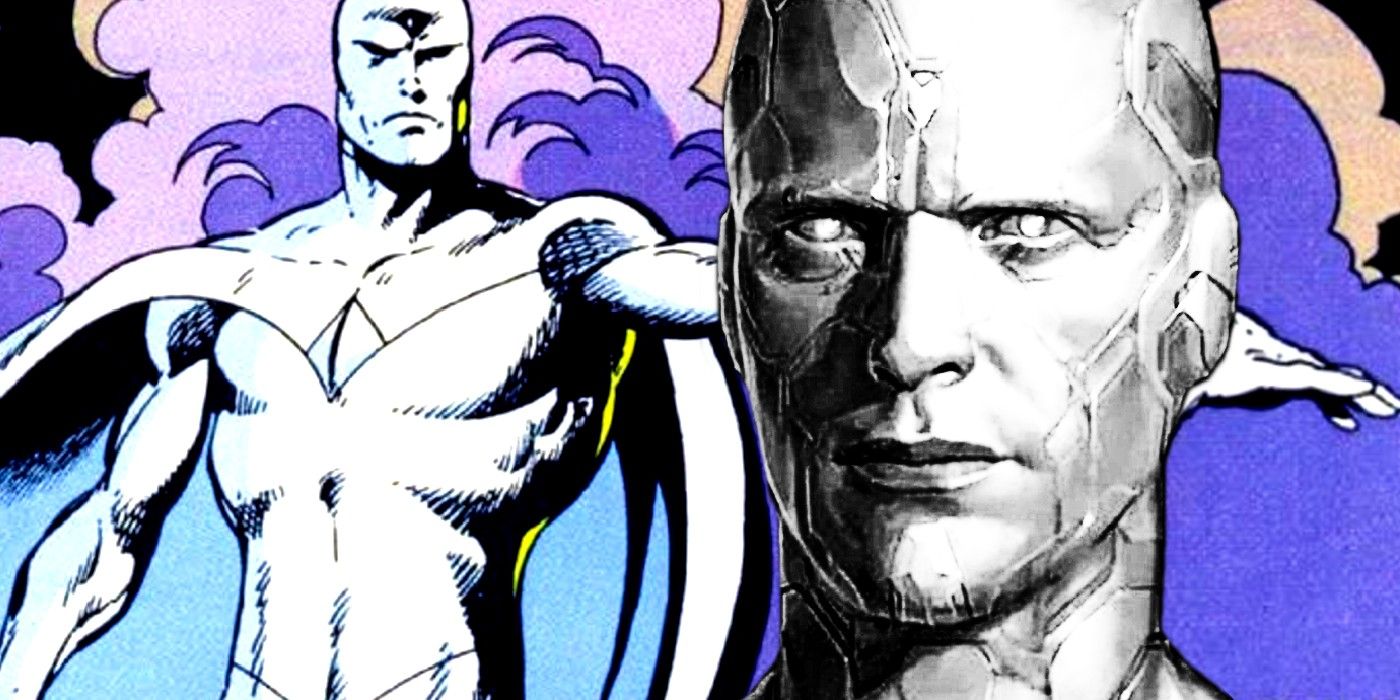
Vision’s white appearance almost played heavily into is MCU appearance as Marvel Studios Head of Visual Development Ryan Meinerding revealed unused concept art for him that used a combined white and gold aesthetic, but that look was also inspired by the comics. In John Byrne’s 1989 arc Vision Quest, the synthezoid loses his color when he is disassembled in response to seizing control of America’s nukes by an international task force led by Cameron Brock. Ultimately, it turned out that Vision was being manipulated by Immortus (an alt-universe version of Kang the Coqueror) but he was taken apart and studied by Vigilance, Brock’s taskforce.
As in WandaVision‘s fifth episode flashback when Wanda supposedly recovered Vision’s body, in the comics his dismembered body is taken back and Hank Pym – Ultron’s creator in the comics – rebuilds him. Unfortunately, he cannot be rebuilt fully because the source of his “humanity” was the brain patterns of Simon Williams (AKA Wonder Man), which stood in for the Mind Stone in the original origin story. When Williams refuses to allow that to happen again (because he’s no longer dead), Vision is brought back without part of him and he is resurrected as an emotionless husk, more android than man. Thanks to the experiments on his body, his skin remains bleached until he eventually refinds himself through another complex plot again involving Wonder Man. In both the comics and WandaVision, the white version of the android lacks everything that made Vision more than the sum of his technological parts and ultimately, the impostor stands as a monument to why Vision was right to fear the misuse of his corpse.
Originally from https://screenrant.com/wandavision-white-vision-explained-episode-8-credits-scene/
